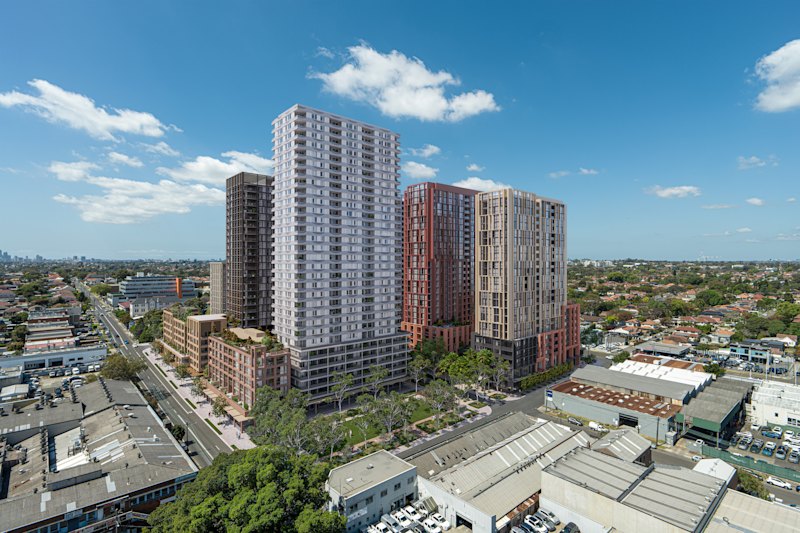The headwinds the Australian economy faces other than the property market

The surprise federal election result in May delivered the slowing property market a much-needed boost in sentiment.
Real estate agents were quick to rejoice – registering an uptick in open home numbers and appraisals – but whether it is a sugar hit to a property market in the doldrums is yet to be determined, and it may not be enough to turn around a bigger economic storm brewing.
Despite the prospect of personal income tax cuts and cheaper mortgages, consumer confidence has fallen to a two-year low, according to a Westpac-Melbourne Institute survey released on Wednesday, as shoppers become increasingly concerned about the state of the economy and their chances of holding on to a job.
Meanwhile, Australian house prices remain expensive by international and historical standards, which creates challenges and opportunities for the economy, according to Commonwealth Bank housing research also released on Wednesday.
We asked five leading economists about the headwinds the Australian economy faces, other than a recovering property market.
NAB chief economist Alan Oster
Alan Oster said the number one issue facing the economy in the next year was constrained consumers in the face of low wage growth.
The next headwind would be a construction downturn, for which he forecast a 20 per cent fall from peak to trough.
Mr Oster does not believe Australia is at risk of a recession despite a weak private sector. He said the public sector was very strong and exports were likely to remain strong given LNG platforms were fully operational.
While he expected property markets to bottom out soon, a recovering market would not be enough to prevent an economic slowdown.
“We don’t really expect house prices to rise much. It’s income effects from constrained consumer balance sheets that matter rather than house price wealth effects that matter,” Mr Oster said.
Broadly, rate cuts thus far and assuming another one late this year would boost economic growth year-on-year by about 0.8 per cent, according to Mr Oster, but the main impact would be next year.
He said better economic stimulus would be lower unemployment.
“More aggressive infrastructure, provided it is done now, would help, as would further injections of funds into consumer balance sheets, be it tax cuts or cash payments. Micro-reform would help but productivity improvements tend to take time,” Mr Oster said.
CommSec senior economist Ryan Felsman
Ryan Felsman said an economic headwind for Australia was ongoing global trade uncertainty, which was weighing on business confidence – especially manufacturers.
“Still-challenging domestic conditions for retailers and the construction sector following the end of the residential dwelling investment boom provide challenges, dragging on growth,” Mr Felsman said.
Any increase of the jobless rate above 5.5 per cent could also cause households to remain cautious with their spending, Mr Felsman said.
An Australian recession was not the “base case view”, but some states were more vulnerable than others, including the Northern Territory, Western Australia and Queensland due to the end of the mining boom.
He said while a recovery in the Sydney and Melbourne property markets could potentially encourage households to upgrade their homes or renovate, it was contingent on job security and unemployment rates remaining below 5 per cent.
Mr Felsman said the main concern about the property market related to residential construction and dwelling investment.
“The pipeline of residential property remains firm, but leading indicators of building activity such as council approvals point to a ‘normalisation’ of building to around decade-average levels,” he said.
AMP Capital chief economist Shane Oliver
The other main concerns for the economy, according to Shane Oliver, are the downturn in the residential property construction cycle, the ongoing drought and uncertainty around the global growth outlook thanks to US President Donald Trump’s trade wars.
“The risk of recession has increased but the probability is likely only around 20 per cent because there are a bunch of offsetting positives for the Australian economy,” Dr Oliver said.
He said the risk would escalate if the global or Chinese economy collapsed, but that is not AMP Capital’s base case.
NSW and Victoria were the most vulnerable states at risk of slowing because they have the highest debt-to-income and house price-to-income ratios.
While a recovery in property markets would help a broader economic slowdown, Dr Oliver said, a range of other factors would help Australia avoid a recession, including infrastructure spending, strong population growth, competitive export industries and brightening outlook for mining investment.
Dr Oliver said APRA’s loosened lending rule and cuts to income tax and interest rates would all help stimulate growth, but more would likely need to be done.
“This is likely to include more rate cuts taking the cash rate down to 0.5 per cent early next year, an acceleration in infrastructure spending where possible, a bringing forward of the [government’s] stage two tax cuts and [as a last resort] the RBA undertaking quantitative easing which should ideally – from a fairness and efficiency point of view – see it work with the government to fund extra fiscal stimulus.”
Domain economist Trent Wiltshire
Trent Wiltshire cited rising unemployment led by a construction downturn, ongoing weak wage growth and global risks as the major headwinds in the next six to 12 months.
He said while there was a growing risk of a recession, it remained a low probability.
“Australia’s strong population growth is one factor that means the chances of a recession is low. But even without an official recession, the economy could soften further and unemployment could rise,” Mr Wiltshire said.
He wrote last week that stabilising property prices and higher turnover of stock would help the economy.
“A modest turnaround in property prices should help the broader economy. Rising prices will help boost the construction sector, which is facing a downturn in the next couple of years.
“The end of price declines will also give a boost to very weak property sales, which will help those closely linked to the property sector, but also struggling retailers and tradespeople.”
Mr Wiltshire said while rate cuts and relaxed lending rules might be enough to stimulate economic growth, fiscal stimulus would be another option.
“The RBA has pushed the government to deploy fiscal stimulus, either in the form of increased spending or tax cuts, to provide a boost to the economy.
“Despite the arguments for fiscal stimulus, the government has reaffirmed its commitment to a budget surplus in 2019-20. But if the economy continues to slow and unemployment doesn’t fall, the government should be open to changing its position.”
BIS Oxford Economics senior economist Sean Langcake
According to Sean Langcake, the main downside risks to the economy are that soft consumer spending continues to weigh on GDP growth and weak wage growth is holding back household consumption.
BIS Oxford Economics believes there is a low probability that the national economy will enter recession in the near term.
“The headwind from the fall in mining investment has just about run its course, while business investment and exports should continue to make a solid contribution to growth over the next year,” he said.
Mr Langake said construction activity in the residential sector was expected to further fall through this year and next year, with a recovery some way off.
He said while lower interest rates would give borrowers more spending money, he agreed with Reserve Bank governor Philip Lowe that monetary policy was reaching its limits.
“More could be done to terms of infrastructure spending and policies that encourage firms to invest, innovate and hire more staff,” Mr Langcake said.
We recommend
States
Capital Cities
Capital Cities - Rentals
Popular Areas
Allhomes
More










